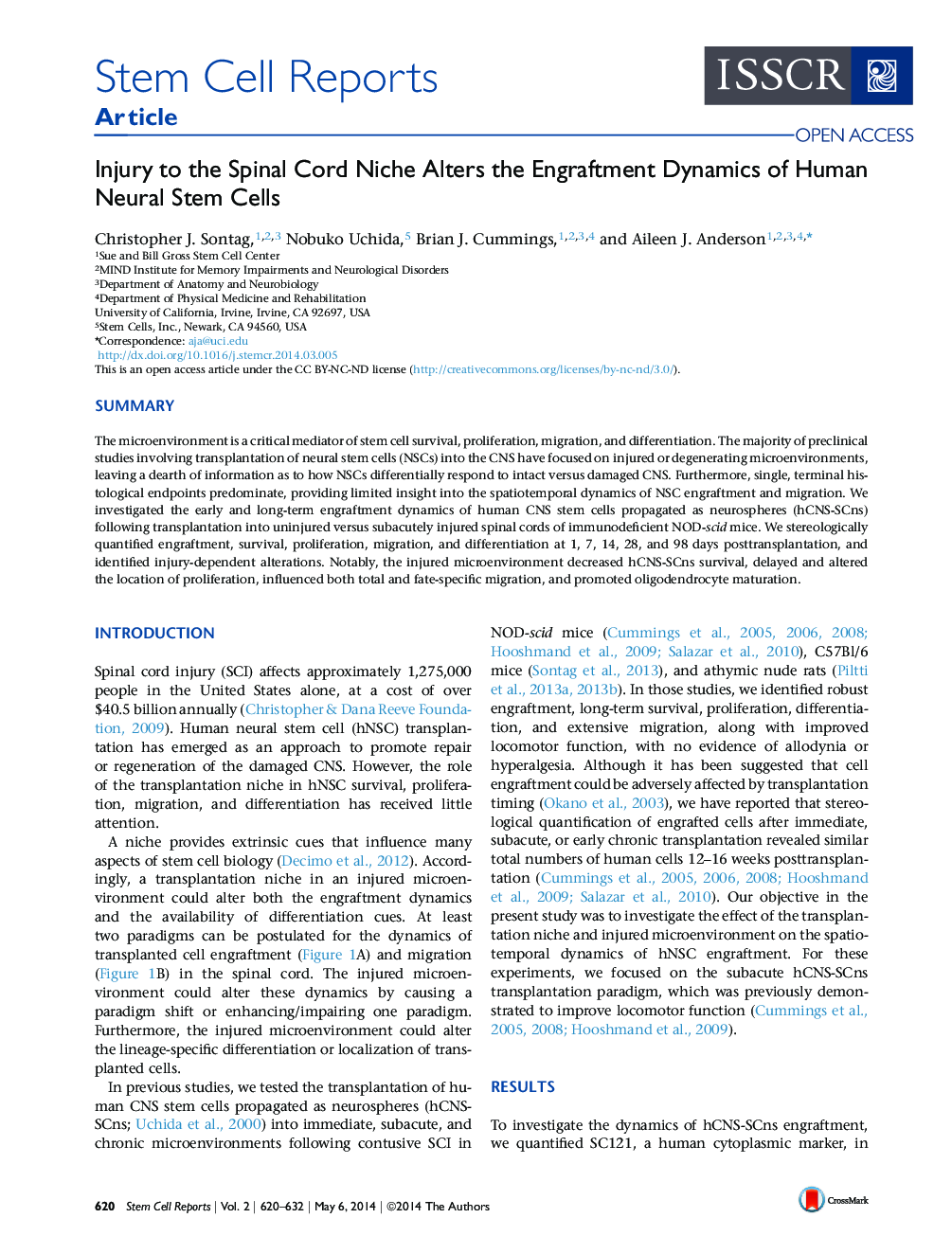| Article ID | Journal | Published Year | Pages | File Type |
|---|---|---|---|---|
| 2093360 | Stem Cell Reports | 2014 | 13 Pages |
•hCNS-SCns survival is decreased in the injured niche versus the intact niche•hCNS-SCns proliferation is delayed and proximal to the lesion in the injured niche•hCNS-SCns migration is localized near the lesion in the injured niche•Oligodendrocytic maturation of hCNS-SCns is increased in the injured niche
SummaryThe microenvironment is a critical mediator of stem cell survival, proliferation, migration, and differentiation. The majority of preclinical studies involving transplantation of neural stem cells (NSCs) into the CNS have focused on injured or degenerating microenvironments, leaving a dearth of information as to how NSCs differentially respond to intact versus damaged CNS. Furthermore, single, terminal histological endpoints predominate, providing limited insight into the spatiotemporal dynamics of NSC engraftment and migration. We investigated the early and long-term engraftment dynamics of human CNS stem cells propagated as neurospheres (hCNS-SCns) following transplantation into uninjured versus subacutely injured spinal cords of immunodeficient NOD-scid mice. We stereologically quantified engraftment, survival, proliferation, migration, and differentiation at 1, 7, 14, 28, and 98 days posttransplantation, and identified injury-dependent alterations. Notably, the injured microenvironment decreased hCNS-SCns survival, delayed and altered the location of proliferation, influenced both total and fate-specific migration, and promoted oligodendrocyte maturation.
